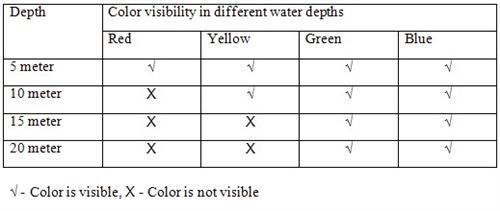| Complexity level: | 9 |
| Project cost ($): | 250 |
| Time required: | 1 day to prepare, 1 day for observation |
| Material availability: | Scuba diving gear, a boat, and lighting equipment may be rented from a scuba diving rental shop |
| Safety concerns: | Be extremely careful to ensure the safety of all participants. Life jackets must be worn at all times, and adult involvement is mandatory. The involvement of a qualified and experienced scuba diver is absolutely necessary. |
Hypothesis
Overview
Scientific Terms
Materials
Procedure

Results
Conclusion
Also consider
References
Related videos
Hey there! Here are some awesome videos about this science project that we think you'll really like. They're not only super fun, but they'll also help you learn more about the science behind the project. So sit back, relax, and get ready to have some fun!!


